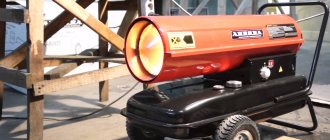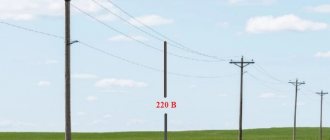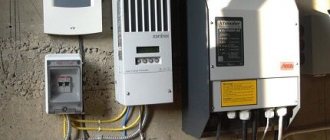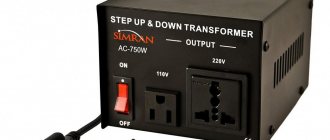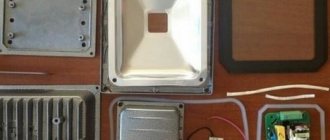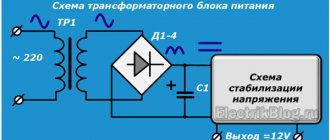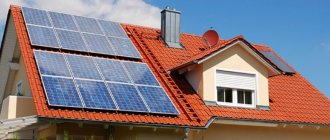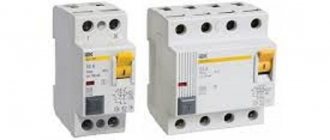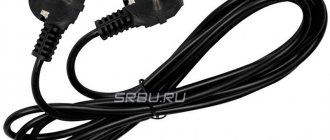How does it work
The engine chambers contain compressed fuel that can ignite. During the combustion process, gases are formed that begin to rotate the crankshaft. Because of this, the alternator rotor begins to work. A magnetic field is generated in the stator.
Electric generator
The result of the processes described earlier is the appearance of an inductive electric current in the winding. It is available for consumption immediately at the device output by any other devices. Trips to nature, backup power supply - situations when such solutions become relevant. In this case, an electric generator is indispensable.
Generator types
One classification of generators is based on the source from which the energy comes. The current generated as a result of the operation of internal components is also different, which helps to distinguish other groups. Each variety has its own characteristics, positive and negative sides.
Petrol
In most cases, the power of such devices does not exceed 20 kW. The scope of use of the devices is quite wide:
- Country houses.
- Dachas.
- Power supply for hand-held power tools.
- Small machines, and so on.
Models
Lighting of local areas, retail areas, car parks - work that is not a hassle for these types of electric current generators.
Interesting! AI-92 is a brand of gasoline that serves as a standard fuel source for most models. 76 and 95 are types of fuel that are also allowed to be used, but for a short time.
Gasoline generators for alternating current are either mobile or stationary. The wheelset is equipped with units characterized by increased power. Manual start or starter is used equally, depending on the main characteristics of the model. A sound-absorbing casing is used to make the operation of the device less noisy.
Diesel
The power of devices of this class can reach 3 mW. For country houses and dachas these are good sources of constant energy. Powerful woodworking equipment is also often powered by autonomous diesel sources of alternating electric current. The same applies to machines with other purposes. Diesel generators are sometimes used to provide electricity to entire villages.
Internal organization
The installations in this case also differ in stationary or mobile design. A distinctive feature is noisy operation. Therefore, in some cases it is impossible to do without special casings that absorb sounds from electric generators .
Diesel generators differ from their gasoline counterparts in their reduced fuel consumption. And the raw materials themselves are cheaper. Expensive models support additional functions:
- Control of the energy generation process.
- Automatic activation in case of emergency situations.
Gas
When choosing, the main thing is to decide in what mode the equipment will operate on an ongoing basis. Here experts give several recommendations:
- When organizing a complete autonomous power supply to your home, it is recommended to give preference to models with liquid-cooled internal combustion engines, designed for uninterrupted operation.
- Backup models are relevant if the power is often turned off on the site. Usually they cannot work longer than 10-20 hours. After this, a break is required, and routine maintenance cannot be avoided.
You might be interested in this Designation and principle of operation of a triac: explanation for dummies
Launch
The devices can operate on liquefied or natural gas. The latter option is more suitable for devices configured for basic energy saving. Reserve options are best used in conjunction with liquefied gas cylinders. Models are now being produced that support both types of fuel at once.
Some allow operation with gasoline. Therefore, there is no need to worry that the owners will be left without electricity.
What is important to know when choosing a generator?
Particular attention should be paid to the choice of generator. At the same time, cost is not the main factor from which to start. A more expensive installation will not always be able to efficiently perform the stated functions, therefore, when choosing, you should pay attention to:
· specifications;
· device build quality;
generator manufacturer.
Most often, they first look at the cost and power of the device, and only then at fuel consumption, operating volume, weight, group - single-phase or three-phase.
Single-phase means working only with single-phase energy consuming devices (220V), so if you need to connect three-phase consumers (380V), then it is better to purchase a three-phase device
What you should pay attention to when purchasing:
1. Purpose. There are electric generators for household and professional use. Household ones are small in size and have lower power (no more than 4 kW), and during long-term operation - about 4 hours - the system requires cooling. The device is most often used as a backup power source when the power outage is short-term.
Professional devices have a power of up to 30 kW and a four-stroke engine. They can operate continuously for 10 hours, so they can act as power sources in large enterprises. Installation of such equipment requires a free, separate room.
2. Power. All types of generators are included in 4 power groups: 0.35-1.5 kW – used for mobile operation; 2-4 kW – for cottages or small houses; 5-15 kW – for use in industry or for providing electricity to cottages during the season; 15 kW or more - to fully supply residential buildings or industrial buildings with electricity all year round.
3. Engine type. Gasoline generators are characterized by two- or four-stroke internal combustion engines. Push-pull is used in devices with low power, is more economical to use, does not cause difficulties during operation and has a low cost.
Four-stroke - suitable for long-term use or if it is necessary to ensure the functionality of powerful devices. It is not as noisy as a two-stroke and is more environmentally friendly.
4. Type of cooling. All gasoline-powered generators are cooled by air or water. Air cooling can be closed or flow. With the water type, both water and specialized coolants can be used for cooling.
5. Working hours. Portable generators can operate for up to three hours, while industrial generators can operate for more than 20 hours. Naturally, the latter’s power, cost and fuel consumption will be many times higher.
6. Launch. The device can be started manually or electrically. Manual is typical for portable devices and a number of inexpensive models. Electric start greatly simplifies turning on the unit in winter, but its cost is higher than that of the first.
7. It is also customary to divide generators by type of design into portable and frame-mounted. Portable ones are more often used to organize short-term power supply at the scene of an accident. The device is a small suitcase that is completely protected on all sides by walls. Frame generators are a solid frame on which the device components that ensure its operation are attached.
The cost of gasoline ones is lower than their diesel counterparts.
Generator classification
There are several signs on the basis of which an electric generator can be classified as one of the varieties:
- Scope of application.
- Operating modes.
- Phasing.
- Autonomy.
Operation
For each of the characteristics, you need to study the model in advance, then the choice will be easier to make.
Autonomy
Complete independence from centralized energy sources is one of the main advantages that modern generators have. Depending on this indicator, models are divided into mobile or stationary.
Stationary
We are talking about generating stations, the basis of which are diesel engines. Suitable for supplying electrical energy to consumers remote from other similar facilities. They provide power supply in those areas where even the slightest interruption of production processes will lead to serious negative consequences.
Mobile
Most often, these units are the most compact. Allows movement in the installation space. Mobile stations have a fairly wide range of applications:
- Electric welding.
- Local lighting.
- Supply of current to household electrical appliances, and so on.
Maintenance and repair
An internal combustion engine is installed inside the equipment, which can run on diesel fuel or gasoline. The units differ from each other in size. One person is enough to move only the smallest devices. But there are mobile options, which are installed on car trailers.
Phasing
The units are divided into three- and single-phase depending on the internal structure of the devices.
Single-phase
They are distinguished by their ability to produce single-phase current. Powering household appliances is the main purpose of the devices. Typically, devices are produced as mobile ones to make them easier to handle. Private households are objects within which single-phase units can be found most often. For example, to meet various needs at the household level.
Three-phase
Powering power electrical equipment is the main function. Sometimes such energy is divided into several phases. For powering electrical wiring, this is a very convenient solution that allows you to split the line into several parts.
Interesting! The main thing is that the power consumption of all lines remains approximately the same. The generator quickly fails if there is a serious difference between the values.
Operating modes
Primary and backup are the two main types of operating modes according to this classification.
Basic
Such devices are designed to work on an ongoing basis. The group of industrial installations consists of powerful electric generators equipped with diesel engines. Relevant for facilities that require constant electrical energy.
Reserve
From the name it is easy to understand that such electric generators are used only in some, exceptional cases. For example, if the centralized power supply is turned off for some time. Such devices can turn on if a relay that responds to a decrease in voltage is activated. Continuous operation is only permissible for several hours.
Scope of application
Generators are produced with two main areas in mind: domestic conditions or industrial facilities.
At home
The choice of household generators on the modern market will please any consumer, regardless of scale and requirements. Typically, single-phase installations are chosen that are capable of establishing an uninterrupted supply of electric current in emergency situations. Powering remote electrical equipment is another area of application. The quality of current becomes a particularly important indicator when it comes to household electrical appliances that use a digital element base. In this case, the energy should have the following parameters: 220 V, 1 A, 50 GHz.
You may be interested in this Features of galvanic cells
In the country
When performing electric welding work, installations with increased power are used. The advantage is that a serious current is generated to form an electromechanical arc.
Note! If the instructions do not immediately describe the use for electric welding, then you should abandon such an idea. Otherwise, generators quickly deteriorate.
Industrial facilities
More often we are talking about independent powerful stationary installations. They are relevant for industrial enterprises and entire residential areas, hospitals, public institutions with high traffic. Then such mechanical devices are relevant.
Gas generators
They have a number of advantages over their competitors operating on liquid fuel. When comparing the price of fuel, as well as its consumption to produce 1 kWh, gas-powered units turn out to be the most economical.
Fig. 5. Gas generators are produced, for example, by Russian Engineering Group.
The advantages of internal combustion engines running on gas also include the almost complete absence of harmful substances in their exhaust.
The most justified use of gas generators is as backup power sources in regions covered by centralized gas supply. If main gas is available, it is advisable to provide a stationary electric generator that provides backup of the main power supply.
As for mobile gas units, the most convenient options are those adapted to operate on both natural and liquefied bottled gas, which allows them to be used on trips to nature or to the countryside, similar to gasoline ones. True, in this case, a gas cylinder becomes an integral attribute.
Combined
Units capable of running on gas and gasoline are among the most universal solutions. In a mobile version, they can solve complex problems. When located on site (in a home, office, workshop), a combined generator can serve as a reserve in case of a power outage. At the same time, it can be used by a mobile team to support work in the field or supply electricity to a country house.
Fig. 6. Popular series of hybrid generators SPEC.
The choice of a stationary unit of a combined type will increase the reliability of the reserve, which will be provided during the simultaneous absence of electricity and main gas.
Quality of operation: what factors does it depend on?
There are some important parameters, without calculating which it is impossible to make the right choice.
- Power.
To do this, you need to calculate in advance how much power all devices installed at home consume. The load from the main consumers can be active and reactive. The main thing is to take into account some margin and apply the appropriate coefficients.
What is inside?
1-1.3 - in this range is the active load factor for household electrical appliances. 3 - the same parameter, but for devices operating with reactive load.
Important! It is necessary to add all types of load to each other in order to understand which unit is required in a particular case. 15% is set aside as a reserve from above. After all, over time, the number of electrical appliances sometimes increases. When starting up, some devices consume much more energy than indicated in the accompanying documentation.
- The type of load the generator operates with.
There are networks with voltages of 220 and 380 V. Many people think that the latter option is universal, which is why it should be preferred in most cases. But it is still better to opt for a single-phase network if there are no plans to connect devices with the appropriate characteristics.
Otherwise, when installing electrical wiring, problems arise that cannot be immediately foreseen.
- Types of fuel used to generate current.
The reliability of most modern installations remains almost the same. The only significant difference is in the cost of devices and energy sources for them.
Practical use
Induction generators find their application in almost all areas of human activity.
Moreover, in any case, the rotational energy of the generator shaft is used to produce alternating current.
This applies to:
- Large hydro, thermal, and nuclear power plants.
- Industrial electric generators.
- Household electric generators.
Generators installed in power plants generate large amounts of electricity, which is then transmitted over vast distances.
They are developed for specific, highly specialized tasks and are highly complex devices, the installation of which requires the construction of separate buildings and structures. In addition, their work is ensured by a specially organized infrastructure.
Industrial generators are used to provide electricity to facilities where there should be no interruptions in power supply.
In addition, they are used to provide electricity to construction sites, rotational camps, remote farms and drilling rigs located in places where installing fixed power lines is impossible or economically impractical.
As a rule, they use diesel fuel to operate, while generating high power alternating current (220 or 380 V). For this purpose, synchronous generators are used, which are capable of ensuring the operation of high-power industrial equipment.
In diesel installations, the generator shaft is rotated by an internal combustion engine (ICE).
Electric generator on chassis
All components included in the industrial generator are mounted on a high-strength steel chassis, which, if necessary, is installed:
- Thermally insulated container.
- Mobile chassis (wheeled, on skids).
Household electric generators have gained great popularity relatively recently.
They are used for the electrification of small cottages, country houses and summer cottages, and also help solve a number of problems associated with the incorrect operation of the centralized power grid and are often used as emergency alternating current sources at previously electrified facilities of this type.
In devices of this type, both gasoline and diesel internal combustion engines are used to rotate the generator shaft. They produce alternating current of low power (from 0.5 to 15 kW) and differ:
- Economical.
- Small in size.
- Low noise level.
When choosing a household alternating current generator, a potential consumer needs to pay attention to:
- Engine type (petrol or diesel).
- The power declared in the accompanying documentation.
- Generator type (synchronous or asynchronous).
- Phasing.
- Control block.
- Noise level.
Unit selection
When purchasing a generator, it is recommended to immediately decide for what purpose the installation is needed. If this is a backup power source, a minimum set of devices must be taken into account. To organize a completely autonomous system, you need to count all the devices and add at least 20% to them.
Work in winter
When choosing between gasoline and diesel units, the buyer must answer several questions:
- Number of phases.
- A type of engine starting for a particular situation.
- Acceptable noise level.
- Required power indicator.
- Expenses for purchasing the unit.
- Which manufacturer did you decide to trust? This is also important for non-electrical installations.
Which companies to trust?
Not only well-known companies, but also those that have appeared quite recently are engaged in the production of electric generators. It’s easy to get confused in the available assortment without some preparation.
Stationary installation
The following several names are well known to the domestic buyer:
- "Boar". It is in greatest demand among Russian companies engaged in this area. Power ranges from 2 to 230 kW. The generators are suitable for both domestic and industrial use. WAY - models suitable for use at home.
- SDMO. Another manufacturer whose models are found in large quantities. Units in this case also have motors operating on 1 or 3 phases. Power and external design are the main differences between different models. The noise-absorbing housing is perfect for those who use household types of generators. Air cooling, power up to 10 kVA - characteristics of a separate class of devices. They are often equipped with additional outputs for AC or DC current. An electric starter complements the stationary varieties of models. They are installed on a frame or inside containers with sound insulation function.
- Geko. Manufacturer with a wide range of products for any conditions. He creates not only household models, but also options with a narrower specialization. A single- or three-phase motor is installed inside the models, depending on what goals the consumer is pursuing. Starting is manual or it is replaced by an electric starter. Some models have noise-absorbing covers. The built-in automatic start panel is also a good addition to standard power plants.
You might be interested in the principle of operation of a thyristor, purpose and connection diagram
Types of generators used
The basis of the electrical part of an autonomous unit is the generator itself (also known as an alternator) - an electrical machine that generates an alternating electric field. There are two main types of electric generators:
- asynchronous;
- synchronous.
Both types are rotating electrical machines consisting of two main parts - a stationary stator and a rotating rotor. The stator and rotor contain magnetic cores with windings wound on them. The stator winding can be single-phase or three-phase, depending on the type of generator. This is where the similarities between synchronous and asynchronous machines end.
Asynchronous generator
Structurally, it is relatively simple and unpretentious. The rotor winding of this generator is short-circuited and made in the form of a so-called squirrel cage. Accordingly, it has no connections with external circuits, and there are no current-collecting devices.
For this reason, generators of this type are called brushless. This circumstance makes the asynchronous generator less sensitive to adverse external factors and more reliable in operation. In particular, it is not afraid of dust and does not require as frequent and qualified maintenance as a synchronous machine. In addition, it is significantly cheaper.
On the other hand, in terms of its performance characteristics, an asynchronous generator is significantly inferior to a synchronous one. The lack of capabilities for automatic regulation of electrical parameters during operation results in a very small range of load changes within which acceptable output electrical parameters are maintained.
Synchronous generator
It has an excitation winding on the rotor, powered externally. Changing the field winding current allows you to maintain the rated voltage of the generator over a wide range of load changes. For this purpose, synchronous generators are equipped with a brush-type sliding current collector. It is the brush mechanism that is the Achilles heel of machines in this class. Brushes are subject to intense wear and are very sensitive to dirt.
The rotor commutator plates require regular cleaning, as when dirty they can either short circuit with each other or lose contact with the brushes. The narrow gaps between the commutator plates are regularly clogged with wear products from graphite brushes and lubricants, which, under the influence of temperature, form a solid conductive composition that disrupts the operation of the machine.
To eliminate these violations, the brush mechanism is dismantled, and the gaps between the collector plates are “filled,” that is, scraped out with a special cutting tool to remove contaminants. This procedure is quite labor-intensive, time-consuming and requires certain qualifications. In this case, an unqualified private owner must contact a specialized workshop.
However, despite all the possible problems, the overwhelming number of autonomous generators sold are precisely synchronous machines. This is explained by their incomparably higher technical characteristics.
About welding generators
Users often ask whether welding equipment can be connected to generators. Manufacturers say that this is possible, but only for welding inverters. The main thing is to operate the equipment without overloading. This directly affects the service life.
Connection
For cooking, it is recommended to use an electrode no larger than 2 mm. It is not advisable to choose a larger diameter; this will negatively affect welding.
Ensuring security requirements
Generators are usually installed outside closed areas. The main thing is that they are located where complete protection from precipitation and other environmental influences is guaranteed. The toxicity of exhaust products is the main reason why generators are prohibited from operating in enclosed spaces.
Note! A solid, stationary horizontal surface without elevations is the optimal support for installation. During installation, you must ensure that there is a free space of at least 1 square meter. This distance should remain on each side of the generator. This is necessary to organize free air circulation and eliminate heat transfer from the generator to surrounding objects.
There should be no foreign objects on the side of the outlet. They can damage the structure or become a source of additional danger to it. The ventilation openings should also be free of any contamination.
Children and other unauthorized persons must not have access to the generator. The same applies to other people who are not familiar with the principle of safe operation.
Self-repair of generators is prohibited; for this you need to invite specialists.
Finding sources of flame or smoldering combustion near the unit is unacceptable. Otherwise, it will not be possible to convert energy safely.
Compact devices
Additional information about connection and operation
It is also better to entrust the installation to specialists so that the device can continue to operate without interruptions. In this case, he will not become a source of danger to others. Connecting the device involves connecting its electrical wiring to a centralized network. Therefore, additional safety regulations must be observed.
Here are the main recommendations:
- When the installation work is completed, the unit is prepared for operation.
- To do this, check the oil level in the crankcase.
- This procedure is carried out while the unit is on a flat horizontal surface.
- As it is consumed, it is refueled.
- If the unit is indoors, be sure to ventilate it during maintenance.
- The gas station does not allow smoking or the use of open flames.
- Gasoline is poured as carefully as possible, avoiding leaks.
One of the options
When the preparatory work is completed, the engine is started. This is achieved by a manual or electric starter, depending on the model.
Alternating current generators on the modern market are presented in a large number of models. Everyone makes the final choice depending on their needs and purposes of use. Various power systems and power range are determined by the object within which the installation is installed. Sometimes the availability of specific types of fuel in a particular region is assessed. It is recommended to choose models that require the least maintenance costs.
Classification of electric generators
The types of electrical generators affect not only the type used, but also the properties of the current produced, as well as other characteristics. Based on the type of current produced, the following types of electrical generators in industry are distinguished:
- DC generators - an electrical machine that converts mechanical into electrical direct current energy;
- Alternating current generators are an electrical machine that converts mechanical energy into electrical alternating current energy.
The following classification of installations affects the synchronism of rotor rotation and the stator magnetic field:
- synchronous installations;
- asynchronous installations.
Classification of electric generators by synchronism is of great importance for industry. Let's take a closer look.
Synchronous electric generators
Synchronous installations are understood as electric generators, the rotor inside of which has the same rotation speed as the magnetic field generated in the stator windings when the load is connected. This property allows such generators to produce a current strength for a short time that is 3-4 times greater than the rated current. Therefore, synchronous generators are suitable for powering devices with high starting currents.
Asynchronous electric generators
Asynchronous industrial electric generators have a rotor whose rotation speed is different from the speed of the magnetic field. The difference between these speeds is called the slip coefficient. The two most commonly used rotor design options are phase and squirrel-cage. Starting an asynchronous plant always requires the supply of external electricity to the stator to create a magnetic field.
As soon as the rotation speed of the rotor exceeds the speed of the magnetic field, the production of electrical energy begins. At the same time, the slip coefficient increases. The higher it is, the more electricity is produced by the equipment. Asynchronous generators are more reliable and resistant to high loads and short circuits compared to synchronous ones. However, they do not withstand high inrush currents well.
